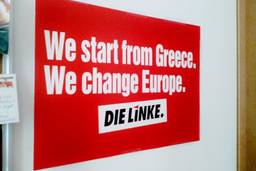
The first lawsuit to be filed against a crowdsourcing company for violation of minimum wage laws, Otey v CrowdFlower, was granted collective action certification on August 27 and will now represent CrowdFlower, Inc.’s army of workers — whose numbers are estimated to be in the millions.
CrowdFlower boasts “the world’s largest workforce” and is a leader in crowdsourcing, a new online work-distribution model that lets businesses manage a sort of virtual assembly line of piecework information tasks. These “microtasks” are often only a click above what a computer can do.
For example, CrowdFlower clients like Apple, Sears, and Toshiba outsource microtasks to CrowdFlower workers who — often working from home — can compile contact lists, classify products, or even flag sarcasm in social media.
The crowdsourcing labor market doubled between 2010 and 2011, and involves millions of people globally. But with less than a decade of history, the industry is virtually unregulated. CrowdFlower classifies the members of its “crowdforce” as independent contractors, thus exempting the company from paying the California minimum wage of $8 an hour. In fact, CEO Lukas Biewald publicly admitted that CrowdFlower workers sometimes make an average of two to three dollars an hour.
But former CrowdFlower workers Christopher Otey and Mary Greth allege that they were treated as employees, not contractors, by the San Francisco company, and are thus entitled to minimum wage compensation. Otey claims that, at times, he was paid less than two dollars an hour for performing tasks for CrowdFlower.
Classification of workers as employees or contractors is based on the level of control the employer exerts over the worker, but there is no specific formula. The IRS website explains, “There is no ‘magic’ or set number of factors that ‘makes’ the worker an employee or an independent contractor, and no one factor stands alone in making this determination.”
In other words, it’s a matter of interpretation, and this is the crux of Otey v CrowdFlower. CrowdFlower has countered that Otey’s work was “completely voluntary in nature.” But according to Catherine Ruckelshaus, legal co-director of the National Employment Law Project. “The intent of the workers in these situations isn’t relevant. It’s not about whether the worker intended it to be a voluntary or low-paying gig for them. It’s whether or not in fact this is an employment relationship being established.”
She says the essence of minimum wage laws is quite simple: “If the sites create an employment relationship between the worker and the recipient or beneficiary of their labor or services, then they have to pay minimum wage and overtime.”
Mark Potashnick, one of the attorneys representing Otey and Greth, is confident that CrowdFlower’s management style exhibits an employment relationship. He says the company’s oversight of each worker’s performance is more extensive than in many traditional workplaces, since all of the worker’s computer activities are recorded. “It’s a combination of Big Brother-type monitoring and micromanagement,” says Potashnick .
Proponents of the current crowdsourcing model argue that people are drawn to the work precisely because the tasks are so small, simple, abundant and unregulated. Jonathan Last, a journalist for The Weekly Standard who wrote about his experience microtasking for Amazon’s Mechanical Turk website, argues that in the world of crowdsourcing, “there is no employment discrimination, none of the inefficiency and unfairness produced by credentialing regimes, and no workplace politics. Work is reduced to its purest components and as a result, opportunities for both employers and employees are increased.”
But even Crowdflower CEO Biewald conceded in a 2010 interview for O’Reilly Media that accusations of exploitation are “totally fair criticisms. I mean I think there should be a minimum wage…. There are lots of new ethical questions that I don’t necessarily have answers to.”
The company made a recent attempt to settle outside of court with Otey for $2,148 and Greth for $15,000 in order to avoid a national collective action lawsuit that could involve millions of workers. Both of the plaintiffs, Christopher Otey and Mary Greth, refused to settle.
Potashnick calls Crowdflower’s low pay a “dangerous business model,” especially since the industry regularly refers to crowdsourcing in terms of ‘changing the future of work’ – the tagline for last year’s industry conference ‘CrowdConf.’
“If we don’t succeed here,” says Potashnick, “they could subvert the U.S. minimum wage by putting more and more tasks online. And that’s just a race to the bottom,” he says.
Ruckelshaus, however, thinks it’s likely that the bare wages won’t sustain, because labor laws will eventually catch up with technology.







